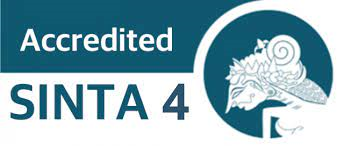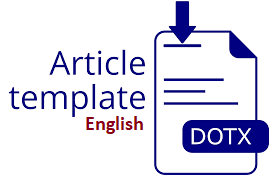Sistem Pendukung Keputusan Pemilihan Destinasi Wisata Halal Menggunakan Metode EDAS
DOI:
https://doi.org/10.30865/klik.v3i2.565Keywords:
Criteria; Destinations; EDAS; Halal Tourism; SPKAbstract
A destination is a place that is visited with significant time during a tour, which can be in the form of natural attractions such as mountains, lakes, rivers, beaches, sea, or in the form of building objects. Simalungun Regency is an area that has attractive and beautiful tourism potential to be used as a tourist location. Every year there is an increase in tourist arrivals from various regions. However, obstacles were found for new tourists related to the lack of information to recommend tourist destinations that suit their needs in terms of time, distance and cost. This situation results in increasing confusion for tourists in determining the choice of halal tourist destinations according to the desired criteria. Based on these conditions, it is necessary to design a Decision Support System (SPK) that can assist tourists in finding halal tourism locations. The application built is a system that is packaged in determining halal tourist destinations so that it can provide recommendations to find out which tours are the leading destinations. The calculation results show that the Bah Butong Tea Garden tour is a recommendation for tourist destinations with a final value of 0.21. The purpose of this study is to apply the EDAS Evaluation Based on Distance from Average Solution method in selecting halal tourist destinations that comply with predetermined criteria. Decision support systems are the right solution needed to solve these problems. The EDAS method is a selection method based on the normalized values ??of the weights and distances of positive and negative solutions. The evaluation process using the EDAS method provides an evaluation level that is accurate and faster in the calculation process
Downloads
References
S. R. Ningsih, D. Hartama, A. Wanto, I. Parlina, and Solikhun, “Penerapan Sistem Pendukung Keputusan Pada Pemilihan Objek Wisata di Simalungun,” Semin. Nas. Teknol. Komput. Sains, pp. 731–735, 2019.
A. S. Putra, “Teknologi Informasi (IT) Sebagai Alat Syiar Budaya Islam Di Bumi Nusantara Indonesia,” SINASIS (Seminar Nas. Sains), vol. 1, no. 1, pp. 567–573, 2020, [Online]. Available: http://proceeding.unindra.ac.id/index.php/sinasis/article/view/4078/690.
A. Dwihastadi, A. Mulyanto, and M. G. Wonoseto, “Prototipe Aplikasi Mobile Pendukung Keputusan Pemilihan Destinasi Wisata di Yogyakarta,” J. Disprotek, vol. 11, no. 2, pp. 59–66, 2020, doi: 10.34001/jdpt.v11i2.1258.
D. N. P. Miftah El Fikri, “Kajian Destinasi Wisata Halal Kota Medan Dalam Persepsi Pemasaran Wisata,” J. Manaj. Tools, vol. 11, no. 1, pp. 263–270, 2019.
R. Destiana and R. S. Astuti, “Pengembangan Pariwisata Halal Di Indonesia,” COPAS Conf. Public Adm. Soc., vol. 01, pp. 331–353, 2011, [Online]. Available: http://proceedings.undip.ac.id/index.php/copas/article/view/37.
N. Haqiki, W. M. Rahmawati, and M. Hakimah, “Implementasi Metode Fuzzy Topsis Dalam Pemilihan Fuzzy Topsis Implementation In Selection Of Best,” J. Ilm. NERO Vol., vol. 7, no. 1, pp. 21–28, 2022.
J. Hutagalung, “Application of the AHP-TOPSIS Method to Determine the Feasibility of Fund Loans Penerapan Metode AHP TOPSIS untuk Menentukan Kelayakan Pinjaman Dana,” J. Pekommas, vol. 6, no. 1, pp. 1–11, 2021, doi: 10.30818/jpkm.2021.2060101.
N. S. Santoso, N. Ongko, G. Wijaya, N. P. Wong, F. Mikael, and T. Informatika, “Hospital Health Services Application Development using Evaluation Based on Distance from Average Solution ( EDAS ),” SEMNASIF, vol. 1, no. 1, pp. 1–9, 2021.
A. G. Simorangkir and R. Syahputra, “Penerapan Metode EDAS Dalam Pemeringkatan Kompetensi Instruktur Pada BBPVP Medan,” J. Ilm. MEDIA SISFO, vol. 16, no. 2, pp. 104–118, 2022.
Suharti and D. Putro Utomo, “Sistem Pendukung Keputusan Kelayakan Penerima Bantuan Tanah Garapan Pada Desa Trans Aliaga Ujung Batu Iii Dengan Metode Distance From Average Solution ( EDAS ),” Nas. Teknol. Inf. dan Komputer), vol. 5, no. 1, pp. 43–55, 2021, doi: 10.30865/komik.v5i1.3647.
H. R. Andra Rizky Afandhi, Putri Aisyiyah Rakhma Devi, “Penentuan Siswa Berprestasi Kelas Bahasa Di Sma ‘Efg’ Menggunakan Metode Edas,” Antivirus J. Ilm. Tek. Inform., vol. 16, no. 1, pp. 39–51, 2022.
R. Safitri and I. Firdaus, “SPK Rekomendasi Pekerjaan Dengan Metode EDAS ( Studi Kasus?: Lembaga Kursus dan Pelatihan Komputer Widya Informatika Selat Panjang ),” J. Inf. Komput. Log., vol. 1, no. 4, pp. 1–8, 2020.
J. Hutagalung and M. T. Indah R, “Pemilihan Dosen Penguji Skripsi Menggunakan Metode ARAS, COPRAS dan WASPAS,” J. SISFOKOM (Sistem Inf. dan Komputer), vol. 10, no. 3, pp. 354–367, 2021, doi: DOI?: 10.32736/sisfokom.v10i3.1240,.
F. Sonata and J. Hutagalung, “Rekomendasi Prioritas E-Budgeting Dalam Alokasi Pengembangan Kota Medan Menggunakan Algoritma Psi ( Preference Selection Index ),” J. Ilm. NERO, vol. 7, no. 2, pp. 105–120, 2022.
J. Hutagalung, “Studi Kelayakan Pemilihan Supplier Perlengkapan Dan ATK Menggunakan Metode SAW (Simple Additive Weighting),” J-SAKTI (Jurnal Sains Komput. dan Inform., vol. 3, no. 2, pp. 356–371, 2019, doi: 10.30645/j-sakti.v3i2.154.
P. Fitriani and T. S. Alasi, “Sistem Pendukung Keputusan dengan Metode WASPAS, COPRAS, dan EDAS?: Menentukan Judul Skripsi,” J. Media Inform. Budidarma, vol. 4, p. 56, 2020, doi: 10.30865/mib.v4i4.2431.
A. Iskandar, “Sistem Pendukung Keputusan Kelayakan Penerima Bantuan Dana KIP Kuliah Menggunakan Metode ROC-EDAS,” Technol. Sci., vol. 4, no. 2, pp. 856–864, 2022, doi: 10.47065/bits.v4i2.2265.
A. G. Simorangkir, F. Saidah, and M. Mesran, “Penerapan Metode Maut, Copras Dan Edas Dalam Pemilihan Media Pembelajaran Online Di Masa Pandemic Covid-19,” J. Teknol. Inf. Mura, vol. 14, no. 1, pp. 46–56, 2022, doi: 10.32767/jti.v14i1.1580.
K. Tamimi and P. T. Prasetyaningrum, “Sistem Pendukung Keputusan Rekomendasi Makanan Bernutrisi Bagi Penderita Gizi Buruk Menggunakan Metode Edas,” J. Inf. Syst. Artif. Intell., vol. 11, no. 1, pp. 1–9, 2021.
Y. Yeyen Novita Sari, Husaini, “Sistem pendukung keputusan rekomendasi pekerjaan di aceh menggunakan metode evaluation based on distance from average solution (edas) berbasis web,” J. Real Ris., vol. 5, no. 1, pp. 84–91, 2023, doi: 10.47647/jrr.
A. Karim, S. Esabella, M. Hidayatullah, and T. Andriani, “Sistem Pendukung Keputusan Aplikasi Bantu Pembelajaran Matematika Menggunakan Metode EDAS,” Build. Informatics, Technol. Sci., vol. 4, no. 3, p. 1353?1366, 2022, doi: 10.47065/bits.v4i3.2494.
Bila bermanfaat silahkan share artikel ini
Berikan Komentar Anda terhadap artikel Sistem Pendukung Keputusan Pemilihan Destinasi Wisata Halal Menggunakan Metode EDAS
ARTICLE HISTORY
Issue
Section
Copyright (c) 2023 Juniar Hutagalung

This work is licensed under a Creative Commons Attribution 4.0 International License.
Authors who publish with this journal agree to the following terms:
- Authors retain copyright and grant the journal right of first publication with the work simultaneously licensed under Creative Commons Attribution 4.0 International License that allows others to share the work with an acknowledgment of the work's authorship and initial publication in this journal.
- Authors are able to enter into separate, additional contractual arrangements for the non-exclusive distribution of the journal's published version of the work (e.g., post it to an institutional repository or publish it in a book), with an acknowledgment of its initial publication in this journal.
- Authors are permitted and encouraged to post their work online (e.g., in institutional repositories or on their website) prior to and during the submission process, as it can lead to productive exchanges, as well as earlier and greater citation of published work (Refer to The Effect of Open Access).
















